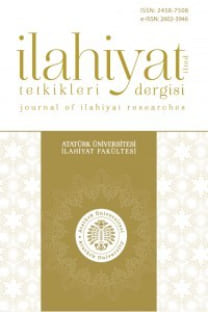Göğün Kraliçesi İsis’in Geri Dönüşü: Hristiyanlıkta Meryem Ana Tapınması
Antik Mısır'da Meryem isminin yazılışı mr sözcüğüyledir, sevilen anlamına gelir. İsis deMeryem de, özü itibarıyla aynı Tanrıça olduğu gibi Tanrısal ananın aynı bedenleşmiş görünümüdür.Bu nedenle, Hıristiyanlar, İsis'in tapınaklarını yıkıp yerle bir etmişler ve tapınanlarını daöldürmüşler; fakat bütün bu olup bitenlere rağmen, İsis, Meryem'e beslenilen iman ve tapınmadayaşamaya devam etmiştir. Nitekim İsis'e okyanus yıldızı anlamına gelen "Pelagia" unvanıverilmişken, benzeri şekilde Meryem de denizyıldızı olarak tanınmıştır. İştar ya da İnanna'nıntanındığı unvanlar gibi, Meryem de İsis'e verilen "Göğün Kraliçesi" unvanını paylaşmıştır. İsis,Tanrıça konumuyla her şeyin hükmedicisini yansıtırken; Meryem de, Kutsal Ruh ya da Tanrıailesi olarak eşleştirilen gökteki yücelmeyi ve taçlanmayı temsil etmektedir
The Queen of Heaven Isis Come Back: The Mary Worship in Christianity
The name Mary in Ancient Egypt, where the written word was mr, means the beloved. İsisand Mary are in essence the same goddess and the same embody the aspect of the divine mother.For this reason, to the Christians who destroyed Isis’s temples and killed her devotees, but in spiteof this, Isis lives on the belief and cult of Mary. Thus Mary is also known as ‘star of the sea’ whileIsis was given a similar title of ‘Pelagia’ meaning ‘star of the ocean’. Another title Mary shares withIsis is ‘Queen of Heaven’ (also a title of lshtar or lnanna). Isis reflects by her goddess status as theruler of all while Mary represents her exaltation and coronation in heaven as spouse of the HolySpirit or the family of god
___
- Alaharasan A.J. (2006). Home of the Assumption: Reconstructing Mary’s Life in Ephesus, Massachusetts.
- Albright W.F. (1971). Yahweh and the Gods of Canaan: A Historical Analysis of Two Contrasting Faiths, New York.
- Anonim (2004). Kutsal Kitap Eski ve Yeni Antlaşma (Tevrat, Zebur, İncil), İstanbul.
- Brown R.E. (1978). Mary in the New Testament, London.
- Budge E.A.W. (2001). Legends of Our Lady Mary The Perpetual Virgin.
- Dürüşken Ç. (2000). Antik Çağda Yaşamın ve Ölümün Bilinmezine Yolculuk: Roma’nın Gizem Dinleri, İstanbul.
- Foss C. (1981). Ephesus After Antiquity: A Late Antique, Byzantine, Turkish City, London.
- Garland A.C. (2007). A Testimony of Jesus Crist, New York.
- Kingsley R.G. (1964). The Mystical Doctrine of Apostle John, New York.
- Losch R.R. (2005). The Uttermost Part of the Earth: A Guide you Places in the Bible, Michigan.
- Massey G. (1907). Ancient Egypt: The Light of the World Vol.2, London.
- Massey G. (1941). The Jesus Legend Traced in Egypt for ten thousand years, New York.
- McCabe E.A. (2008) An Examination of the İsis Cult with Preliminary Exploration into New Testament Studies, Plymouth.
- Miegge G. (1955). The Virgin Mary: The Roman Catholic Marian Doctrine, Philadelphia.
- Murdock D.M. (2009). The Horus-Jesus Connection, Venice.
- Peltoma L.M. (2003). Studia Patristica Vol. XL, Oxford .
- Plutark (2006). İsis ve Osiris, İstanbul.
- Remler P. (2010). Egyptian Mythology A to Z, New York. GÖĞÜN KRALİÇESİ İSİS’İN GERİ DÖNÜŞÜ: HIRİSTİYANLIKTA MERYEM ANA TAPINMASI 107
- Remsberg J.E. (2007). The Christ Myth, London.
- Shoemaker S.J. (2006). The Ancient Traditions of the Virgin Mary’s Dormition and Assumption, Oxford.
- Steiner R. (2003). İsis Mary Sophia: Her Mission and Ours, New York.
- Yıldırım M.H. (2010). Yahudi ve Hıristyan Kaynaklarında Tanrı İmgesi, İstanbul.
- Walford E., (1962). The Ecclesiastical History of Evagrius: A History of the Church from AD 431 to AD 594, London.
- Weigall A. (2002). Pavlus Hıristiyanlığına Dair Bilimsel Bir Eleştiri: Hıristiyanlığı- mızdaki Putperestlik, İstanbul.
- Wickwire D. (1999). Yahudi, Hıristiyan veİslâm Kaynaklarına göre Kutsal Kitab’ın Değişmezliği, İstanbul
- ISSN: 2458-7508
- Yayın Aralığı: 2
- Başlangıç: 1975
- Yayıncı: Atatürk Üniversitesi
